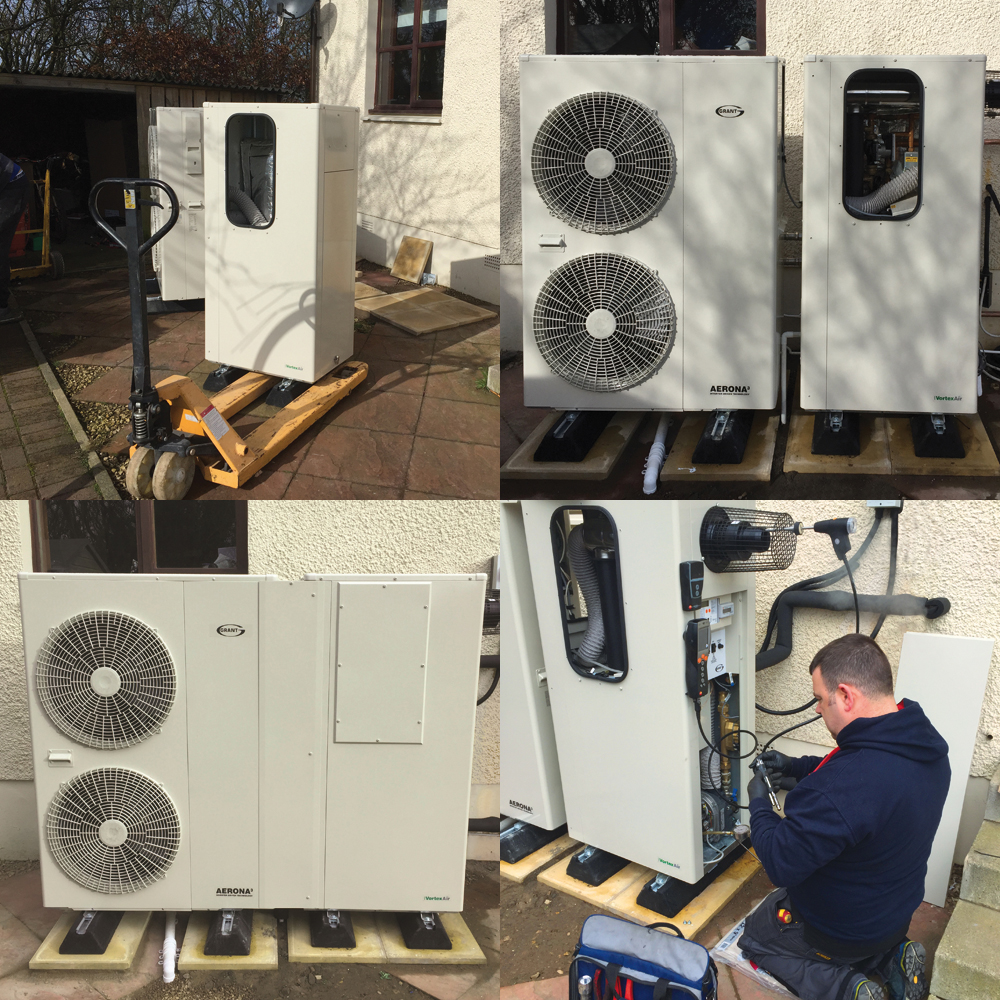


Anna Wakefield, Head of Marketing and Data Protection at Grant UK, explains how hybrid technology is the next step forward for heating efficiency.
The launch of the government’s Clean Growth Strategy in late 2017 has been a catalyst for a renewed focus on how sustainability in the UK will be delivered in the years ahead.
While solid legislation is yet to be developed directly from the strategy, boiler manufacturers have been working hard to further reduce emissions from their appliances, often in advance of any national or international legislation requiring them to do so.
One international commitment that has recently come into effect for domestic boilers is the next phase of the EU’s Energy-related Products Directive. This new legislation has set maximum nitrogen oxide (NOx) emission levels that space heaters will need to meet, reducing the overall NOx emissions produced from heating. One of the overarching objectives of the new legislation is to help improve the air quality by reducing pollution.
In response to both government regulations and a growing demand from homeowners, manufacturers have continuously explored ways to make their products more environmentally friendly and sustainable.
Hybrid models, which we will come onto later, are a perfect example of this, and highlight ways fossil fuel appliances can continue to evolve alongside renewable technologies.
For oil-fired boilers however, the NOx emissions target are set at a maximum of 120mg/kwh, so all oil boilers placed on the market by a manufacturer from now on will need to be compliant. The good news is that advances with burner technology, coupled to Grant’s efficient boiler designs, have enabled all of our Vortex Pro and Eco boiler ranges to achieve these new targets with virtually no visible change to the existing line-up.
It is fair to say that oil boilers provide an effective heating solution, and will do for some time to come, but that does not mean to say boiler manufacturers have not looked at new ways to provide greener solutions for householders. That is especially true of hybrid systems.
Providing a bridge between renewables and traditional heating methods, hybrid models unlock the benefits of green energy to off-gas households. In distress purchase situations, this allows for the immediate restoration of a property’s heating, while also enabling homeowners to introduce cleaner energy into their homes.
A hybrid system provides engineers with flexibility when it comes to installation. The oil boiler and heat pump can either be installed at the same time or in two stages, with the oil boiler installed first to quickly restore a home’s heat and hot water, and the heat pump installed at a later date. Furthermore, the hybrid’s oil boiler can either be sited internally as a standalone unit, or externally alongside the heat pump, depending on the availability of space.
For the installation highlighted below, both components were fitted at the same time with the oil boiler being installed next to the heat pump (which is always externally sited) to create a single unit.
This hybrid utilises an advanced control system which automatically monitors the system temperatures, seamlessly switching the unit to the most effective heating mode (heat pump, oil, or a combination of both).
Case study
In this step by step, a 17-year-old oil boiler in a four-bedroom detached house in Dalrymple, Scotland was in need of upgrading.
The property was built around 1990, with a radiator wet system and domestic hot water cylinder being heated by a system oil-fired boiler. When it became apparent that their old oil boiler needed replacing, the homeowners decided that they wanted to incorporate greener heating technology into their home.
The property’s existing radiator system was already suited to oil, so there was no need to resize and replace the radiators to accommodate the introduction of a hybrid system. This installation was completed by MCA Renewables, a Grant G-One-accredited installer based in Glasgow.
 Steps 1-4 below, clockwise from top left on the image, illustrate the installation of the Grant system.
Steps 1-4 below, clockwise from top left on the image, illustrate the installation of the Grant system.
If you'd like to keep up-to-date with the latest developments in the heating and plumbing industry, why not subscribe to our weekly newsletters? Just click the button below and you can ensure all the latest industry news and new product information lands in your inbox every week.